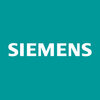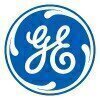


i
ABB
Filter interviews by
ABB Diploma Electrical Engineer Interview Questions, Process, and Tips
ABB Diploma Electrical Engineer Interview Experiences
1 interview found

(5 Questions)
- Q1. What is current?
- Ans.
Current is the flow of electric charge through a conductor.
Current is measured in Amperes (A).
It is the rate of flow of electric charge.
Current flows from high potential to low potential.
There are two types of current - AC (Alternating Current) and DC (Direct Current).
Examples of current sources include batteries, generators, and power plants.
- Q2. Define Resistance?
- Ans.
Resistance is the opposition to the flow of electric current in a circuit.
Resistance is measured in ohms (Ω).
It is caused by the collisions of electrons with atoms in a conductor.
Higher resistance leads to lower current flow in a circuit.
Resistance can be calculated using Ohm's Law: R = V/I, where R is resistance, V is voltage, and I is current.
Examples of resistors include light bulbs, heating elements, and electronic
- Q3. What is Ohm law
- Ans.
Ohm's Law states that the current flowing through a conductor is directly proportional to the voltage applied across it, and inversely proportional to the resistance of the conductor.
Ohm's Law is represented by the formula V = I * R, where V is voltage, I is current, and R is resistance.
It helps in calculating the relationship between voltage, current, and resistance in an electrical circuit.
It was formulated by German...
- Q4. What is the voltage?
- Ans.
Voltage is the difference in electric potential between two points, measured in volts.
Voltage is the potential difference between two points in an electrical circuit
It is measured in volts (V)
Voltage is responsible for the flow of current in a circuit
Higher voltage means more potential energy available to move electrons
Examples: 120V in household outlets, 12V in car batteries
- Q5. Whats is the drift Velocity?
- Ans.
Drift velocity is the average velocity of charge carriers in a particular direction under the influence of an electric field.
Drift velocity is a result of the electric field applied to a conductor.
It is typically very small, on the order of millimeters per second.
Drift velocity is influenced by the material of the conductor and the strength of the electric field.
It is an important concept in understanding current flow
Interview Preparation Tips
Top trending discussions






Interview questions from similar companies

(5 Questions)
- Q1. What is circuit breakers
- Q2. What is difference contractor or relay
- Q3. What is difference neutral or earthing
- Q4. What is star or delta
- Q5. What is use contractor

Diploma Electrical Engineer Interview Questions & Answers
Schneider Electricposted on 13 Aug 2024
I applied via Company Website and was interviewed in Jul 2024. There were 2 interview rounds.
(3 Questions)
- Q1. Electrical machine
- Q2. Environment study
- Q3. Transformers, a.c. machine and d.c. machine
(2 Questions)
- Q1. Electrical machine 1
- Q2. Electrical machine 2
Interview Preparation Tips
- Electrical Machines

Diploma Mechanical Engineer Interview Questions & Answers
Addverb Technologiesposted on 31 Aug 2024
(2 Questions)
- Q1. What is a mailing machine
- Q2. What is the lathe machine
Interview Preparation Tips

I was interviewed before Jan 2024.
Technical questions mcqs
(3 Questions)
- Q1. Technical questions related to electrical engineering
- Q2. How to select rating of electrical components
- Q3. Types of sensors and their applications

I applied via Company Website and was interviewed in Mar 2022. There were 2 interview rounds.

About my work
Interview Preparation Tips

Diploma Electrical Engineer Interview Questions & Answers
Schneider Electricposted on 20 Jun 2024
Electrical according basic knowledge
Electrical according discuss and basic electrical theories

Diploma Apprentice Trainee Interview Questions & Answers
Addverb Technologiesposted on 21 Feb 2022
(2 Questions)
- Q1. Tell me about yourself.
- Q2. What is your goal in the comapny
(8 Questions)
- Q1. What do you know about G - code or M - code???
- Ans.
G-code and M-code are programming languages used in CNC machines to control their movements and operations.
G-code is used to control the movement of the machine, such as its speed, position, and direction.
M-code is used to control the machine's auxiliary functions, such as turning on and off the spindle or coolant.
Both G-code and M-code are written in a specific format and can be edited using a text editor or specializ...
- Q2. What is 5s and its benifit???
- Ans.
5S is a workplace organization method that aims to improve efficiency and productivity by eliminating waste and optimizing workflow.
5S stands for Sort, Set in Order, Shine, Standardize, and Sustain
Sort involves removing unnecessary items from the workplace
Set in Order involves organizing the remaining items in a logical and efficient manner
Shine involves cleaning and maintaining the workplace
Standardize involves creati...
- Q3. What is the role of robot in human life
- Ans.
Robots play a significant role in human life by performing tasks that are dangerous, repetitive, or impossible for humans.
Robots can be used in manufacturing to increase efficiency and reduce human error.
Robots can be used in healthcare to perform surgeries and assist with patient care.
Robots can be used in exploration to gather data in environments that are too dangerous for humans.
Robots can be used in agriculture to...
- Q4. Difference between Nc machines and Cnc machines
- Ans.
NC machines are manually operated while CNC machines are automated.
NC machines require manual input for each movement while CNC machines are programmed to perform movements automatically.
CNC machines are more precise and efficient than NC machines.
NC machines are cheaper than CNC machines.
Examples of NC machines include drill presses and lathes while examples of CNC machines include milling machines and laser cutters.
- Q5. Diffrence between G - code or M - code
- Ans.
G-codes are used to control the movement of the machine while M-codes are used to control the machine's functions.
G-codes control the movement of the machine, such as its speed, direction, and position.
M-codes control the machine's functions, such as turning on or off the spindle or coolant.
G-codes are used more frequently than M-codes in CNC programming.
Examples of G-codes include G00 for rapid positioning and G01 for...
- Q6. Diffrence between Vertical milling machines and horizontal milling machines
- Ans.
Vertical milling machines have a spindle that moves vertically while horizontal milling machines have a spindle that moves horizontally.
Vertical milling machines are better suited for cutting and drilling metal sheets and plates.
Horizontal milling machines are better suited for cutting and shaping solid materials like wood and plastics.
Vertical milling machines are typically used for producing small to medium-sized par...
- Q7. Diffrence between lathe machine and milling machine
- Ans.
Lathe machine is used for turning and shaping cylindrical workpieces while milling machine is used for cutting and shaping flat or irregularly shaped workpieces.
Lathe machine rotates the workpiece while the cutting tool remains stationary, while milling machine rotates the cutting tool while the workpiece remains stationary.
Lathe machine is used for producing cylindrical shapes like shafts, rods, and bushings, while mi...
- Q8. What is the role of cnc machines in the company
- Ans.
CNC machines play a crucial role in the company's manufacturing process.
CNC machines automate the manufacturing process, reducing human error and increasing efficiency.
They can produce complex and precise parts that would be difficult or impossible to make by hand.
CNC machines can be programmed to produce large quantities of parts with consistent quality.
They are used in a variety of industries, including aerospace, au...
Skills evaluated in this interview

I applied via Campus Placement

GS reasoning math science
(1 Question)
- Q1. Motor robotics plc electronic

(5 Questions)
- Q1. What is circuit breakers
- Q2. What is difference contractor or relay
- Q3. What is difference neutral or earthing
- Q4. What is star or delta
- Q5. What is use contractor
ABB Interview FAQs
Tell us how to improve this page.
ABB Interviews By Designations
- ABB Project Engineer Interview Questions
- ABB Financial Analyst Interview Questions
- ABB Software Engineer Interview Questions
- ABB Design Engineer Interview Questions
- ABB Software Developer Interview Questions
- ABB Maintenance Engineer Interview Questions
- ABB Management Trainee Interview Questions
- ABB Production Engineer Interview Questions
- Show more
Interview Questions for Popular Designations
- Diploma Mechanical Engineer Interview Questions
- Diploma Trainee Engineer Interview Questions
- Diploma Civil Engineer Interview Questions
- Diploma Apprentice Trainee Interview Questions
- Diploma Electronics Engineer Interview Questions
- Diploma Chemical Engineer Interview Questions
- Diploma Automobile Engineer Interview Questions
- Diploma Engineer Trainee - DET Interview Questions
- Show more
ABB Diploma Electrical Engineer Interview Process
based on 1 interview
Interview experience
Interview Questions from Similar Companies
Fast track your campus placements
ABB Diploma Electrical Engineer Reviews and Ratings
based on 6 reviews
Rating in categories
|
Project Engineer
578
salaries
| ₹5.4 L/yr - ₹16.5 L/yr |
|
R&D Engineer
323
salaries
| ₹6.5 L/yr - ₹25 L/yr |
|
Financial Analyst
252
salaries
| ₹2 L/yr - ₹10 L/yr |
|
Design Engineer
232
salaries
| ₹1.8 L/yr - ₹10.5 L/yr |
|
Associate Project Engineer
188
salaries
| ₹5 L/yr - ₹12 L/yr |

Siemens

Schneider Electric

Emerson Electric Co.

Honeywell International India
- Home >
- Interviews >
- ABB Interview Questions >
- ABB Diploma Electrical Engineer Interview Questions














